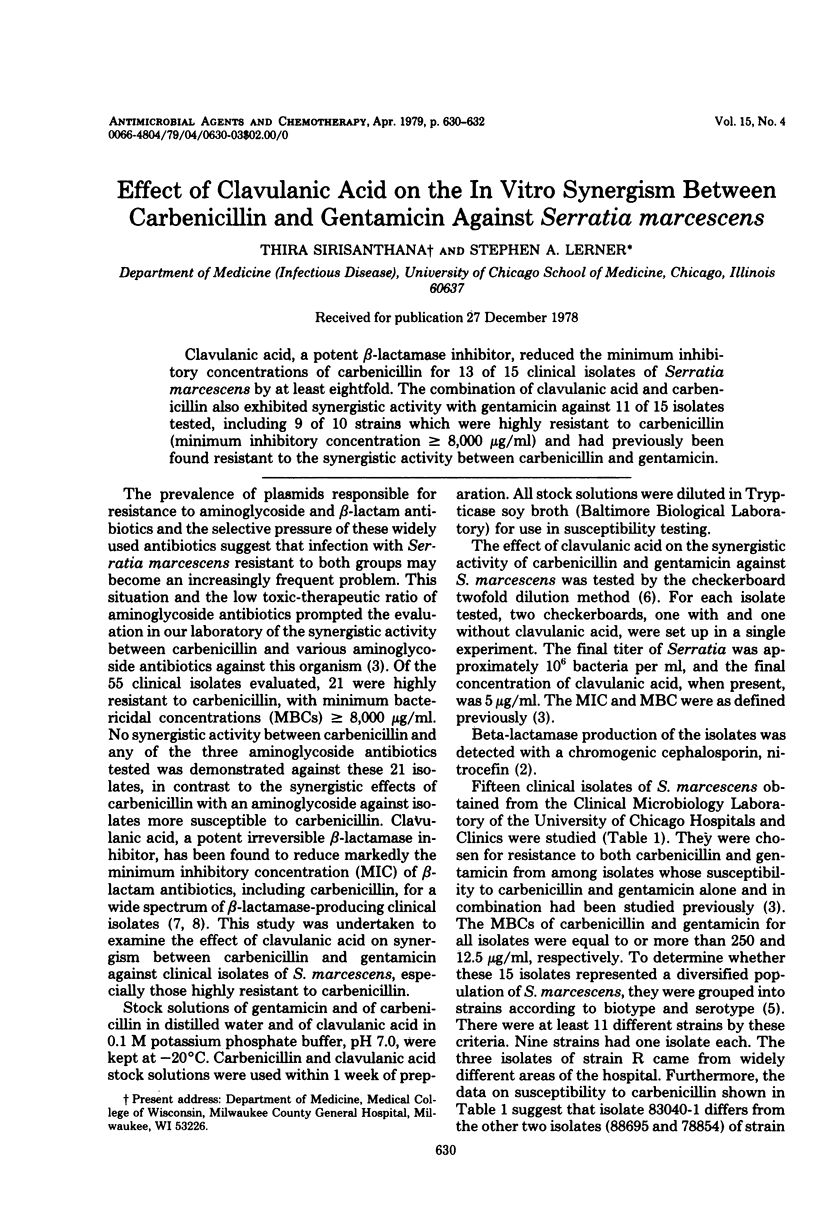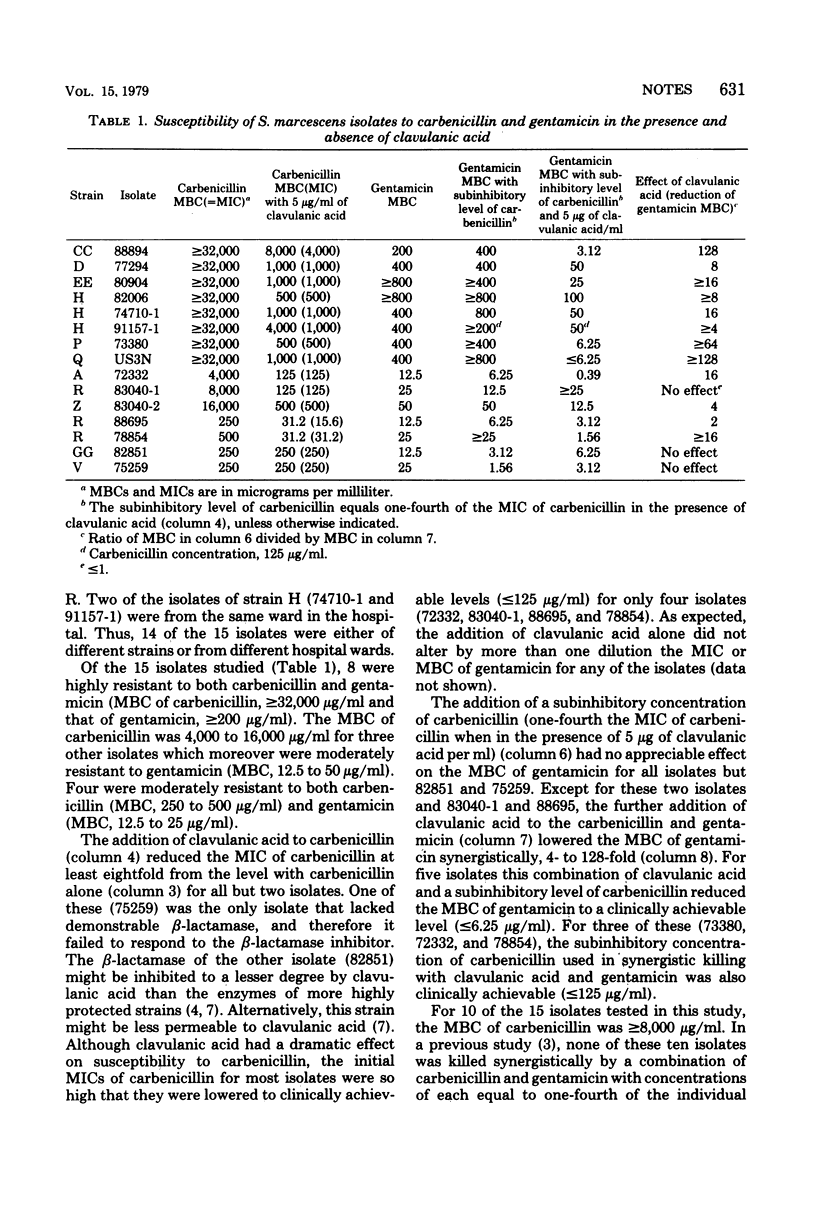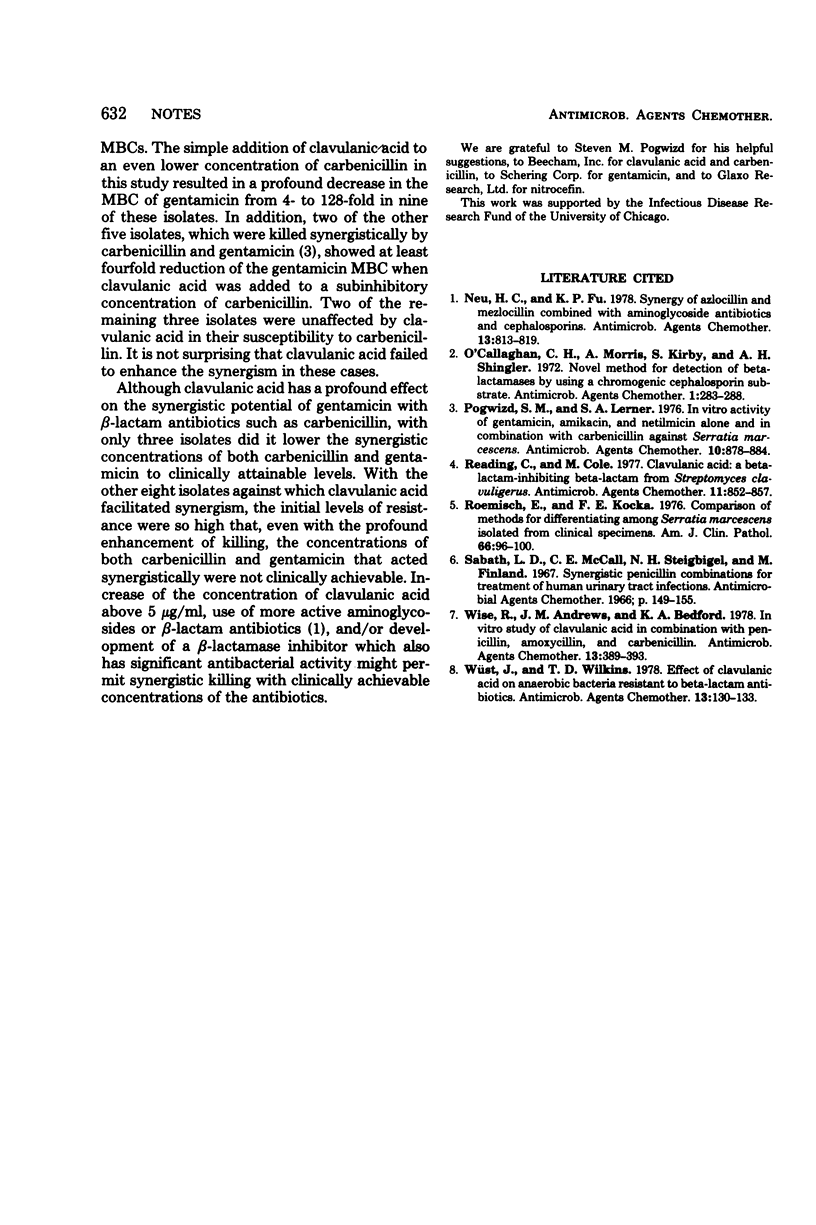Abstract
Clavulanic acid, a potent β-lactamase inhibitor, reduced the minimum inhibitory concentrations of carbenicillin for 13 of 15 clinical isolates of Serratia marcescens by at least eightfold. The combination of clavulanic acid and carbenicillin also exhibited synergistic activity with gentamicin against 11 of 15 isolates tested, including 9 of 10 strains which were highly resistant to carbenicillin (minimum inhibitory concentration ≥ 8,000 μg/ml) and had previously been found resistant to the synergistic activity between carbenicillin and gentamicin.
Full text
PDF


Selected References
These references are in PubMed. This may not be the complete list of references from this article.
- Neu H. C., Fu K. P. Synergy of azlocillin and mezlocillin combined with aminoglycoside antibiotics and cephalosporins. Antimicrob Agents Chemother. 1978 May;13(5):813–819. doi: 10.1128/aac.13.5.813. [DOI] [PMC free article] [PubMed] [Google Scholar]
- O'Callaghan C. H., Morris A., Kirby S. M., Shingler A. H. Novel method for detection of beta-lactamases by using a chromogenic cephalosporin substrate. Antimicrob Agents Chemother. 1972 Apr;1(4):283–288. doi: 10.1128/aac.1.4.283. [DOI] [PMC free article] [PubMed] [Google Scholar]
- Pogwizd S. M., Lerner S. A. In vitro activity of gentamicin, amikacin and netilmicin alone and in combination with carbenicillin against Serratia marcescens. Antimicrob Agents Chemother. 1976 Dec;10(6):878–884. doi: 10.1128/aac.10.6.878. [DOI] [PMC free article] [PubMed] [Google Scholar]
- Reading C., Cole M. Clavulanic acid: a beta-lactamase-inhiting beta-lactam from Streptomyces clavuligerus. Antimicrob Agents Chemother. 1977 May;11(5):852–857. doi: 10.1128/aac.11.5.852. [DOI] [PMC free article] [PubMed] [Google Scholar]
- Roemisch E., Kocka F. E. Comparison of methods for differentiating among Serratia marcescens isolated from clinical specimens. Am J Clin Pathol. 1976 Jul;66(1):96–100. doi: 10.1093/ajcp/66.1.96. [DOI] [PubMed] [Google Scholar]
- Wise R., Andrews J. M., Bedford K. A. In vitro study of clavulanic acid in combination with penicillin, amoxycillin, and carbenicillin. Antimicrob Agents Chemother. 1978 Mar;13(3):389–393. doi: 10.1128/aac.13.3.389. [DOI] [PMC free article] [PubMed] [Google Scholar]
- Wüst J., Wilkins T. D. Effect of clavulanic Acid on anaerobic bacteria resistant to Beta-lactam antibiotics. Antimicrob Agents Chemother. 1978 Jan;13(1):130–133. doi: 10.1128/aac.13.1.130. [DOI] [PMC free article] [PubMed] [Google Scholar]


